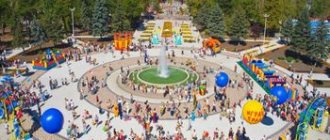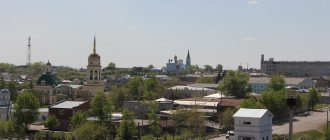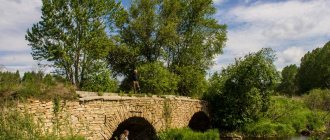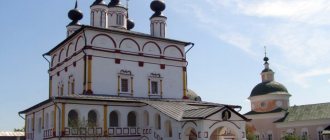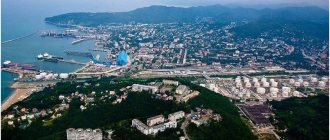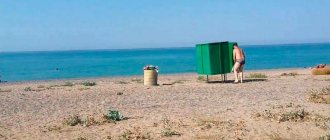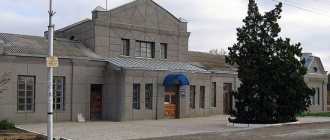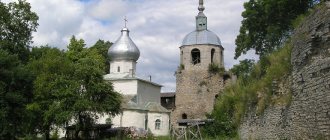Where is Kamensk-Uralsky located?
Kamensk-Uralsky is the center of the Southern Administrative District and the administrative center of the municipal formations of the city of Kamensk-Uralsky and the Kamensky urban district. It is located in the Sverdlovsk region and is the third largest in terms of population and economic potential in the region. It is located in the flat part of the eastern slope of the Middle Urals on the border with Siberia (the border passes through the city). The city is also located at the confluence of two rivers: Iset and Kamenka.
- The total area of Kamensk-Uralsky is 144 square kilometers.
- The approximate population is 168 thousand people.
- The length of the city from north to south is 27 km, from east to west - 15 km.
The climate in the city is temperate continental: winter with severe frosts due to the influence of the Siberian anticyclone; summers are cool with cold air masses that come from the Kara and Barents seas.
Due to the pollution of the urban atmosphere by industrial enterprises, the environmental situation in Kamensk-Uralsk is considered unfavorable. Due to environmental deterioration, the morbidity rate of the population is growing, the quality of drinking water and food is deteriorating. The main sources of air pollution are six industrial enterprises.
The time zone of the city of Kamensk-Uralsky is MSK+2, the offset relative to Coordinated Universal Time (UTC) is +5.
NUDE #1
On the cliff, between the buildings of the former monastery and the electromechanical plant, limestone ridges are clearly visible. Even elementary schoolchildren know that limestone is nothing more than fossilized sea silt, consisting of microscopic calcareous skeletons of marine organisms. This means that there once was a sea in our area.
A close look at the limestone outcrops reveals layers overflowing with the shells and skeletal tubes of coral polyps. And here is a block of stone, entirely consisting of thin, 3-4 mm tubes. It is part of a reef created by corals.
Using reference literature, you can easily determine the lifespan of fossilized skeletons of corals of the genera Siringopora and Lithostrocyon, and brachiopod shells. It turns out that local fossils, and therefore the limestones containing them, are 320 million years old.
Thus, we found out that 320 million years ago at this point on the globe there was a roaring sea, at the bottom of which layer after layer of calcareous silt was deposited, burying the remains of marine organisms - shells and corallites.
The question arises. If the layers at the bottom of the sea were deposited horizontally or hollowly, then why do we find limestone layers inclined (or, as geologists call them, falling) to the horizon at an angle of 30-35 degrees? Inclined strata indicate powerful mountain-building processes. This is the western wing of a rock fold - an anticline, one of the millions that form the ancient Ural mountainous country.
In limestone outcrops one can also find such evidence of mountain-building processes as a “slip surface”. It is a polished surface of a stone, resulting from the movement of one block relative to another along a crack.
Another geological object is a karst niche formed when limestone is dissolved by groundwater (the so-called karst phenomena).
The black layer of flint in the limestone is the remains of the flint skeletons of microscopic marine organisms.
Kamensk-Uralsky Airport
On the territory of Kamensk-Uralsky there is only a military airport. Military unit 45123, the air base of the 2nd Air Force and Air Defense Command, is based here. The nearest civilian international airport is Koltsovo, which is located in Yekaterinburg. The distance from Kamensk-Uralsky to the airfield is 94 km. The airport has the status of a federal facility. Operating hours: 24 hours a day. It ranks 5th in the list of the largest airports in Russia in terms of passenger traffic.
The airport serves aircraft of Russian and foreign airlines: NordStar Airlines, Aeroflot, Air Astana, FlyDubai, Turkish Airlines. Popular destinations of regular and charter flights: Moscow, St. Petersburg, Dubai, Novosibirsk, Krasnoyarsk. The annual passenger traffic is more than 6 million people.
NUDE #2
Downstream the Wheatear, limestones are replaced by other rocks: sandstones, clayey and carbonaceous shales, and conglomerates. All these rocks have a dark brown, and in some places black, color, and therefore differ sharply from gray, and almost white at the surface, limestones. They are classified as the Kamensk coal-bearing strata of the Carboniferous system. Since they are 10-15 million years older than limestones, then, in theory, they should lie underneath them. But mountain-building processes turned them out from under the limestones and crushed them into folds.
Sandstones and shales contain charred remains of ancient plants: tree-like horsetails, club mosses and ferns, which became the starting material for the formation of coal. Here, on the left bank of Kamenka, one of the coal deposits was discovered at the beginning of the 19th century. The continuation of the coal strip opposite the village of Brod was developed from the 19th century to the mid-20th century. Geological exploration discovered 14 coal seams, three of which with a thickness of 0.8-1.2 m later turned out to be quite productive.
The rocks of the coal-bearing strata are witnesses of the Early Carboniferous era (335-320 million years ago). Then, on the swampy land of one of the many volcanic islands of the ancient Ural Sea, forests rose in which 30-40-meter calamites, sigillaria and lepidodendrons grew.
14 layers of coal interlayered with sandstones and shale are the best evidence of how forests grew and died at this place at least 14 times. They were covered by sedimentary rocks - sands and clays - when sea levels rose and fell. And later they were covered by a thick layer of limestone, which was described above.
What is the city of Kamensk-Uralsky famous for?
- One of the visiting cards of the city is the “Stone Gate” rock. The structure is located 5 km from Kamensk-Uralsky, on the banks of the Iset River. The height of the rock is more than 20 m. To see the rock you need to climb to the observation deck at the Sosnovy Bor sanatorium.
- The main attraction of the city is the “Cannon” monument, which was erected in 1967. Permyakov acted as the architect. The monument was created in honor of the workers who worked at the iron foundry. The monument itself is located on a high podium, thanks to which it can be seen from anywhere in the city.
- Near the Church of the Intercession of the Mother of God there is a factory for the production of bells “Pyatkov and K”. The plant was founded in 1991. Bells created at the factory decorate churches all over the world. Every year, in early June, a special bell festival is held in the city. Ringers from all over Russia gather at the festival.
- In the central part of the city - next to the main square and the city hall - there is the Alexander Nevsky Chapel, which was built in 2001 in honor of the 300th anniversary of the city of Kamensk-Uralsky. Near the chapel there is a small park with walking alleys and a large number of benches.
Coat of arms
The coat of arms of Kamensk-Uralsky is presented in the form of a French shield. On a red and azure field, a wavy silver belt is depicted above the division. In the middle it is filled with scarlet. At the top there is a golden cannon, symbolizing the Kamensk state iron foundry. At the bottom there is a double longitudinally divided ring and three aluminum ingots. Above them is a white wing. There is a gold bezant inside the ring.
The artistic composition is included in the State Heraldic Register of the Russian Federation under No. 594. Adopted by the Decision of the Kamensk-Ural City Duma No. 238 of July 7, 1999. Author - A. Grefenstein.
NUDE #3
We move along the river bed. Closer to the turn of Kamenka to the south, among the dark carbonaceous rocks of the coal-bearing strata, bright yellow spots of granite-porphyry catch the eye. This is a new, igneous rock that is younger in origin than the limestones and coal-bearing rocks that are already familiar to us.
Mountain-building processes that began at the end of the Middle Carboniferous era (about 300 million years ago) squeezed out small portions of magma from the bowels of the earth, which penetrated into the rocks of the coal-bearing strata, but due to their insignificance and low temperature, they were not able to break through to the surface of the earth, and frozen in the depths. The scientific name for such formations is igneous intrusions. The continuation of such an intrusion is visible below the mouth of the ravine.
HOUSING
— A new microdistrict in an open field is always an interesting story. How did it start?
— In the mid-1980s, we actively built housing. We rented out more than 100 thousand sq. meters per year. But this was not enough. We decided to approach the issue comprehensively - to build a whole new microdistrict. Modern, comfortable, with its own social infrastructure.
- Why Yuzhny? Why here?
“We analyzed it, weighed everything. In other areas, the city has exhausted the possibilities for comprehensive construction. And here were the fields of the Brodovsky state farm. They were cultivated, corn and other crops were planted, it is clear that the villagers did not really want to give up these lands. But for them this territory was not strategically important, but for Kamensk it was. The issue was resolved at the level of the Russian government, and a decree was issued that provided for new city boundaries. And in 1987, the development of the site began.
The defining resource for us was water. By that time, the Sysert water pipeline had already been launched. He created the conditions for the development of a new microdistrict. Plus the construction of a collector from the Krasnogorsk Thermal Power Plant.
We relied on engineering calculations. It was a well thought out story. And very difficult, I must say. For example, where the road to Suvorov Street from Baynovsky Bridge is now, we had to cut through the rock...
Construction continued without stopping. Almost the entire neighborhood was a construction site. The houses were built in sections. Just yesterday an excavator was working here, and today there are balls at the entrance and occupancy.
It’s hard to believe, but at the stage of launching the first houses, newspaper advertisements in the “Housing Exchange” section were with the note “Southern not to be offered.” It was offensive, but objectively there were enough inconveniences and problems.
After work, I put on a tracksuit and ran from 4pyatiletki street, where I lived, to the new buildings - to meetings of residents. Either there is no water, or something else. Launches always come with certain difficulties. Every resident of that period knew me, and I knew thoroughly what was happening there. He took measures and explained that a lot depended on them—admission to apartments, participation in community cleanups.
We tried to make it solemn at home so that there would be a real holiday. Red ribbon, balloons, music - such events should delight and be remembered.
The ceremonial launch with the participation of the chairman of the regional government Alexei Vorobyov. The new residents are happy.
— Today, the Yuzhny microdistrict continues to actively develop and be built up and is considered a very attractive place to live.
“That’s what it was designed for.” The territory was allocated with an eye to the future. School No. 34 and a kindergarten appeared, although there was almost no finished housing yet. The first store's customers were construction workers, not residents. Everything was created at the same time, that was the idea.
Since then, the neighborhood has grown a lot, and its needs have also grown. Axioma, a modern training center, and another kindergarten have been built, and it’s great!
Now it is important to saturate the South with cultural and sports institutions, and medical facilities. Many issues are already being resolved. I am absolutely confident that with the joint efforts of the deputy corps and the city administration, we will be able to implement all the necessary projects.
— What was the financial mechanism of construction? How did people get this housing?
— Share participation of industrial enterprises. The city Capital Construction Department was created, which accumulated these funds, and we built with them. The provision of apartments was in accordance with the contribution of factories. Each of them had its own order and its own rules for the distribution of housing. The company distributed. The municipality issued warrants.
Wide modern streets and roads first appeared in the Southern microdistrict.
Housing, roads, communications, and social facilities were built using shared money. Every autumn I had to live in Moscow. It was necessary to visit all the ministries to protect these shared funds. Then these funds had to be placed with contractors.
We collected, say, 30 million rubles. But Glavsreduralstroy does not accept it - they say that the Uralaluminstroy trust is already provided with work, and you do not fit in. The executive committee had to make decisions on sending workers to construction sites from industrial enterprises, to seek additional material resources - cement, reinforcement, crushed stone, sand...
- The results were worth it. The microdistrict grew and the housing problem was solved. Now, unfortunately, this is not the case. Houses are being built, but they are half empty. Apartments are needed, especially for young people, but the prices are prohibitive. Do you see any way out?
— It is necessary to create an institution of rental housing in the country. In many countries, a person follows work. I found a good offer, moved, rented a house.
Why go far? Let's take the historical experience of pre-revolutionary Russia. I have been seriously studying this topic for a long time, and I can say with confidence: there was not a single meter of municipal housing. Only private developers built. Apartment houses. Moreover, for any wallet. You need 15 rooms, there will be 15 rooms. You need to remove the corner - here is the corner for you. If you improve your financial affairs, you will rent a more expensive, better home.
We must return to this, but, unfortunately, we cannot yet find those who would take it upon themselves to start such a business.
Making housing more affordable is task No. 1.
— Is there a legal basis for this?
— Federal law on rental housing. As a State Duma deputy, I was part of the group that developed it and made a lot of efforts to ensure that it was adopted.
The law provides for the possibility of construction of rental houses by constituent entities of the Russian Federation, municipalities and private developers.
Private owners who offer at auctions a lower rent for renting residential premises in such houses will receive land plots for rent without bidding at the price of land tax. Additional support for developers is provided in the form of providing the sites with engineering infrastructure.
Financial mechanisms may be different. For example, a loan is not for a single apartment for a single citizen, but for a legal entity. Let’s say for 100 apartments for 30 years. The entrepreneur takes money, buys housing from the developer, organizes its maintenance and rents it out.
But, as I already said, there are no brave ones yet. You need to take a step. Determine at the start some role of the state. Maybe pay off some of the interest on the loan, or some other things that would contribute to the emergence of the first such businessmen. And they will already follow them.
— Another pressing problem related to housing is parking. It’s terrible what’s happening near new houses! There's no crowding of cars. Is it really not possible to charge developers with parking equipment even at the stage of land acquisition and design?
-Can. But as practice shows, this is not a solution to the problem. There is a new Academichesky district in Yekaterinburg. It's all underground parking lots. Modern, multi-level. But they are empty. Almost all transport is parked in the courtyards. People buy apartments, but not parking spaces. There was enough money for housing, but unfortunately for parking.
- So what should we do?
- The solution is the same - rent.
Everything should be in one complex: housing, parking, landscaping, including playgrounds, green spaces. All this must have one owner. Who will be interested in ensuring that everything is in proper form.
And the tenant will pay for the apartment and for the parking space. It is basically impossible to settle in and leave the car in the yard in this situation. As for money, you will need incomparably less of it than when purchasing.
- It would be great! Now many people rent housing, but all this is at a semi-underground level and certainly does not guarantee the quality of public services, a parking space, or other components of comfort.
- We need to look for people. Motivate. The business is actually promising and very necessary.
— The trend in housing construction today is CRT, integrated development of territories. The federal government is aiming at this; a corresponding regional law has been adopted in the region. Kamensk is among the first participants. What is it and what will it give us?
— The CRT mechanism is designed for a comprehensive renewal of urban development. It makes it possible to demolish old, worn-out housing and build a new one in its place - modern and comfortable.
The advantages of the new law are that it significantly reduces the time it takes to prepare a territory for the start of construction, synchronizes programs for the commissioning of housing, road and social infrastructure, and introduces a measure of developer support such as subsidies for the modernization of networks. All this allows you to build quickly and profitably.
What exactly to build and where are now the key issues that the territories are working on. In particular, Kamensk-Uralsky.
CRT is actually a very good chance. Change the appearance of old neighborhoods with barracks and old two-three-story buildings. Improve people's living conditions. Create a comprehensive comfortable infrastructure. Bring the city to a new level of development.
It is important to use the capabilities of the CRT with maximum effect and calculate everything. You cannot enter such a story without preparation. It should be a win-win for everyone. It is necessary to find a balance of interests - the city, residents of houses intended for demolition, developers - and maintain it.
NUDE #5
In the upper reaches of the ravine, under modern loams, greenish sands were exposed. At the end of the Cretaceous - beginning of the Paleogene periods, our area, like the entire eastern slope of the Ural Range, sank again, turning into the seabed. The depressions of the Mesozoic relief were filled with new sediments: clays, siliceous rocks - opoka and sands. Greenish glauconitic sands are 60-40 million years old. The sea, which rushed here from Western Siberia, left another reminder of itself - white quartz sands. Occurring in the area of the Silicate village, the villages of Kodinka and Pirogovaya.
It is amazing that the huge ravine owes its birth to a modest spring, which hardly makes its way to the surface from the aquifers of the earth.
